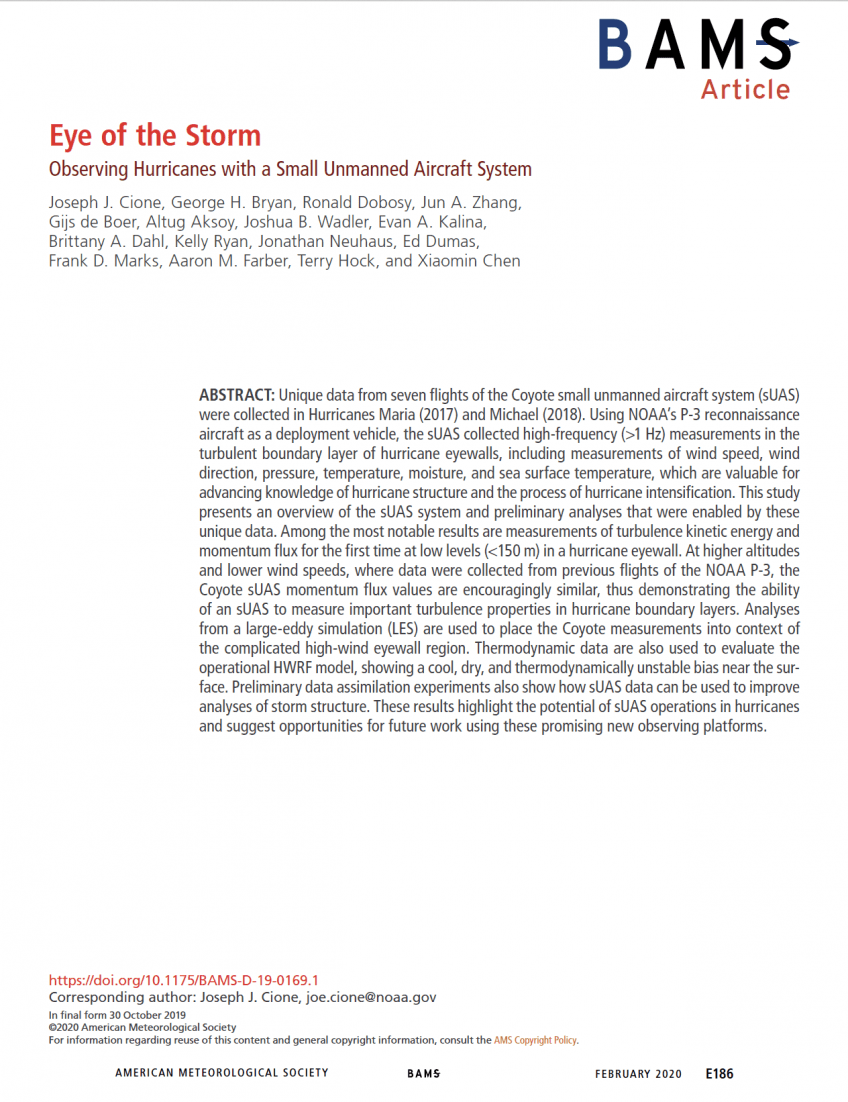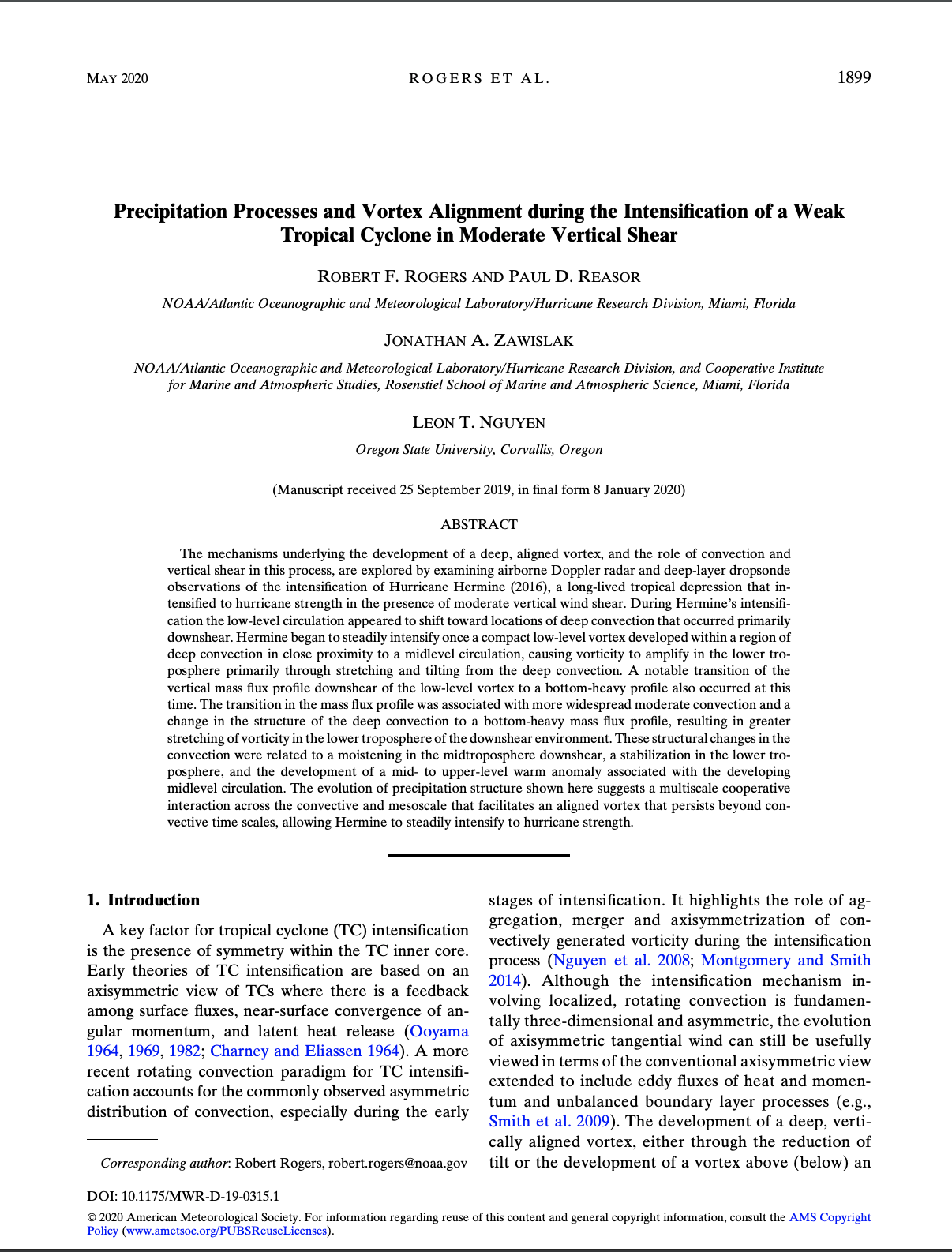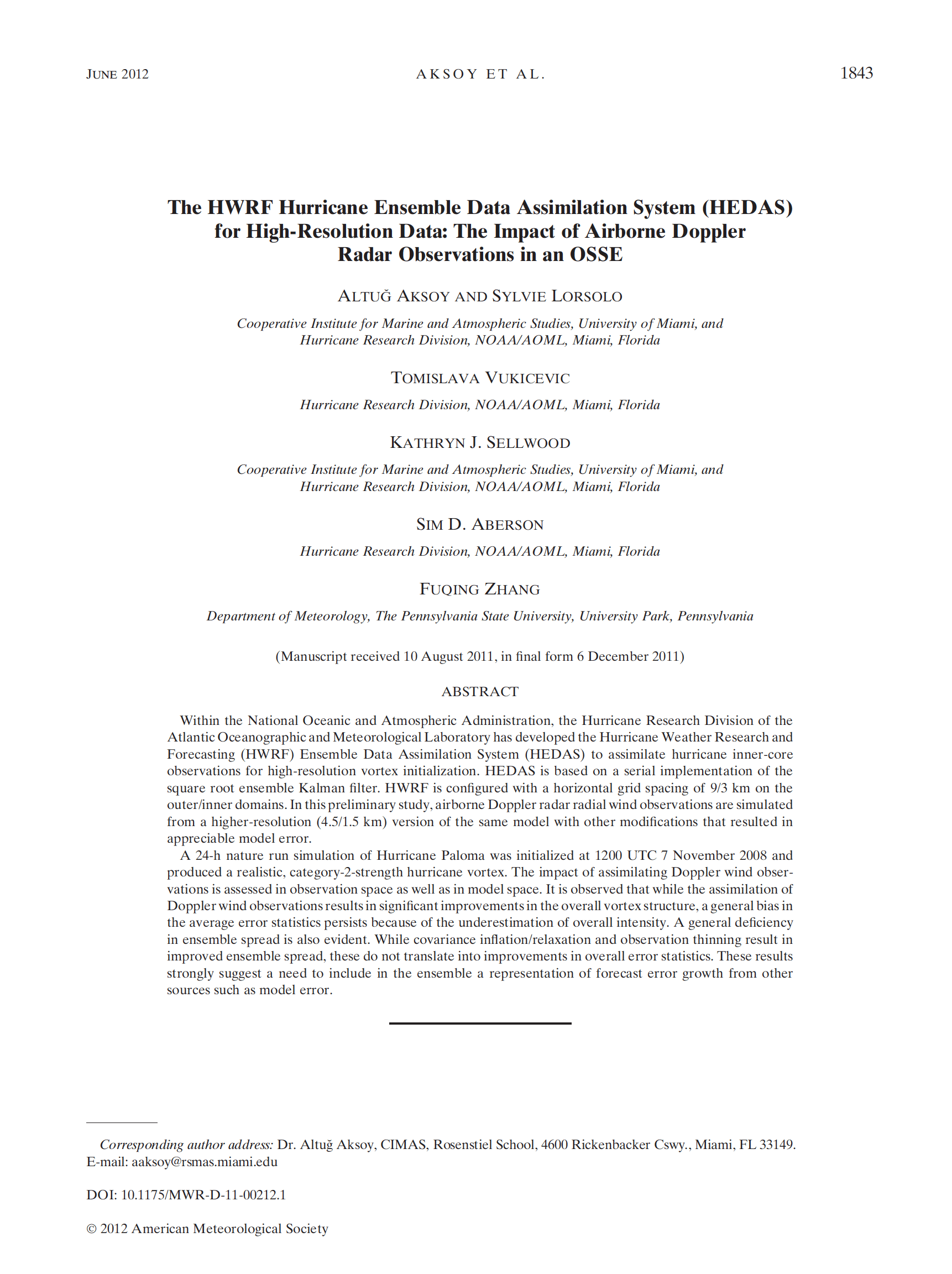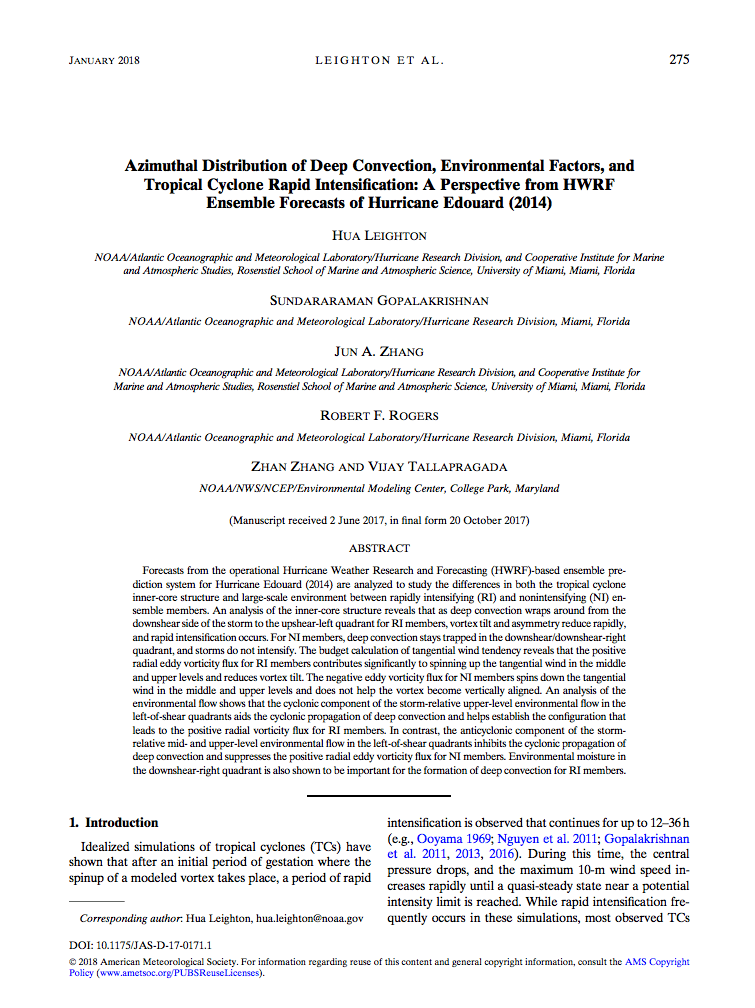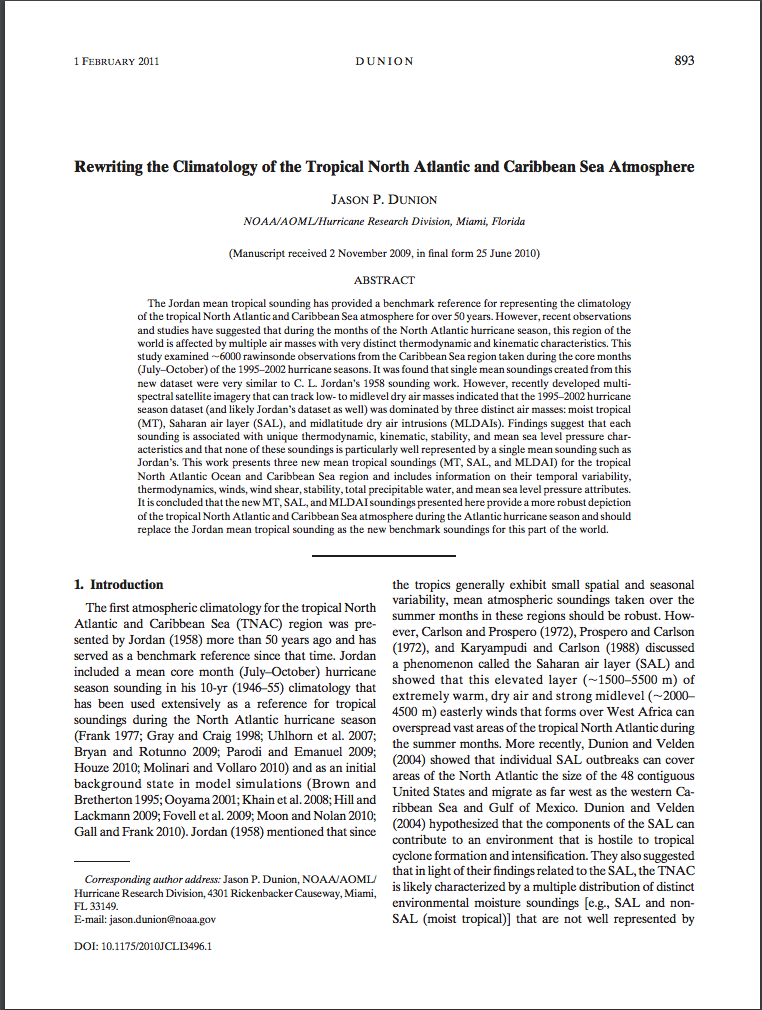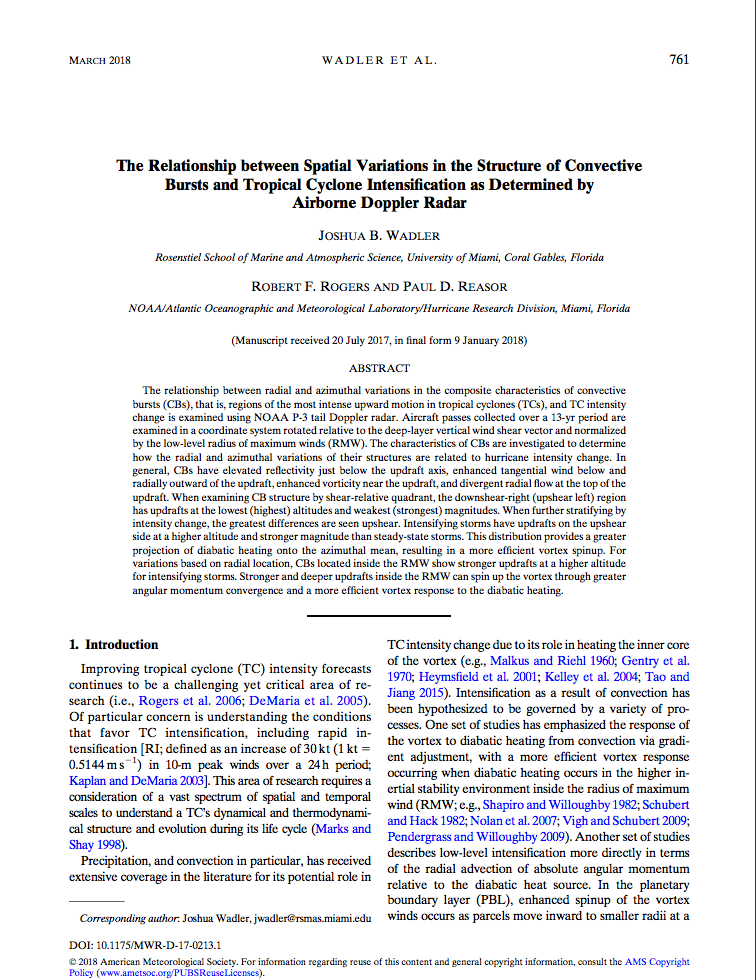Eye of the Storm: Observing Hurricanes with a Small Unmanned Aircraft System
Cione, J. J., Bryan, G. H., Dobosy, R., Zhang, J. A., de Boer, G., Aksoy, A., … & Chen, X. (2020). Eye of the storm: observing hurricanes with a small unmanned aircraft system. Bulletin of the American Meteorological Society, 101(2), E186-E205.
Abstract: Unique data from seven flights of the Coyote small unmanned aircraft system (sUAS) were collected in Hurricanes Maria (2017) and Michael (2018). Using NOAA’s P-3 reconnaissance aircraft as a deployment vehicle, the sUAS collected high-frequency (>1 Hz) measurements in the turbulent boundary layer of hurricane eyewalls, including measurements of wind speed, wind direction, pressure, temperature, moisture, and sea surface temperature, which are valuable for advancing knowledge of hurricane structure and the process of hurricane intensification. This study presents an overview of the sUAS system and preliminary analyses that were enabled by these unique data. Among the most notable results are measurements of turbulence kinetic energy and momentum flux for the first time at low levels (
